site search
online catalog
VERY SCARCE EARLY-WAR 1861 INDIANA CONTRACT OR CAPTURED CONFEDERATE TIN DRUM CANTEEN INSCRIBED BY JOHN A. PAYNE, 10th INDIANA
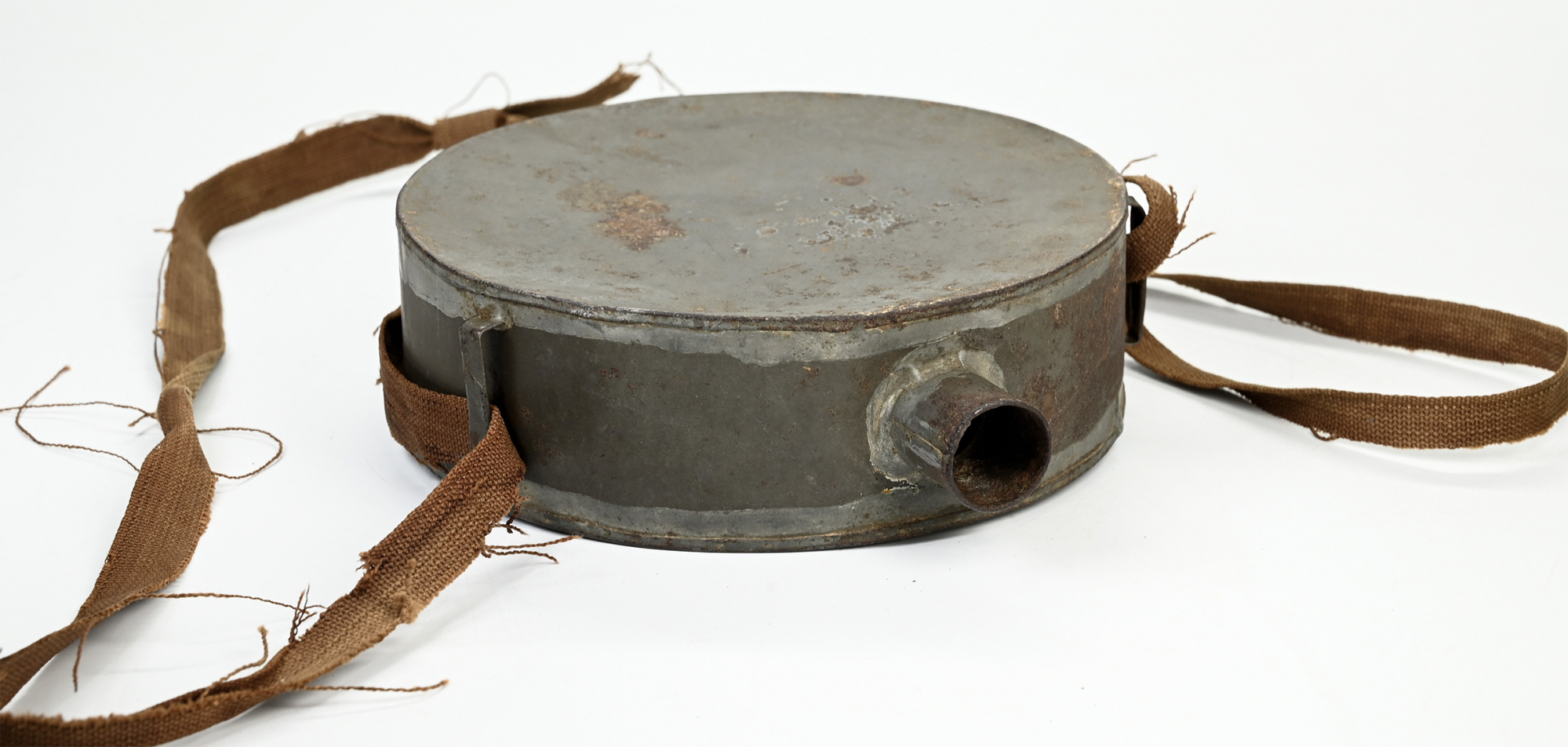
Hover to zoom

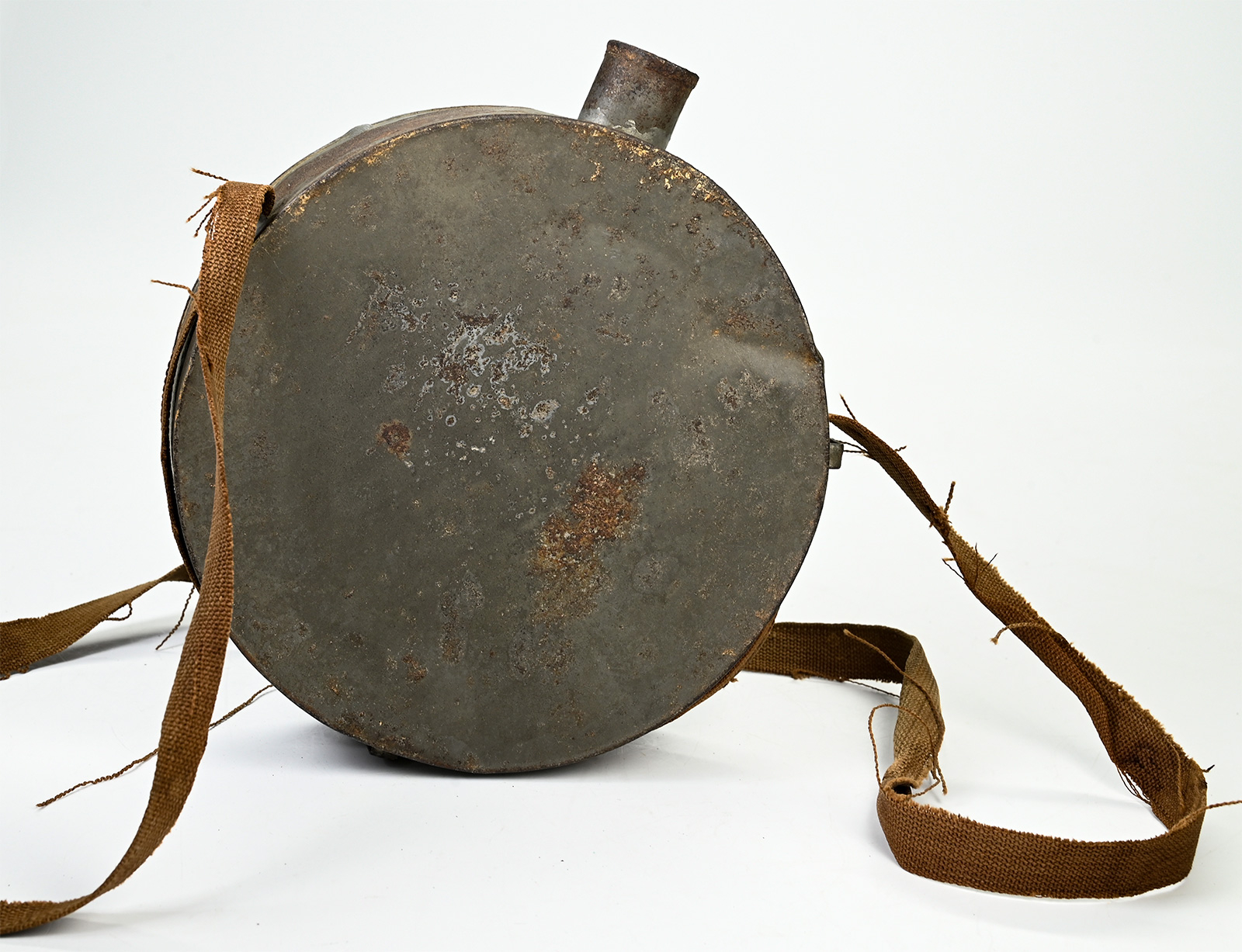
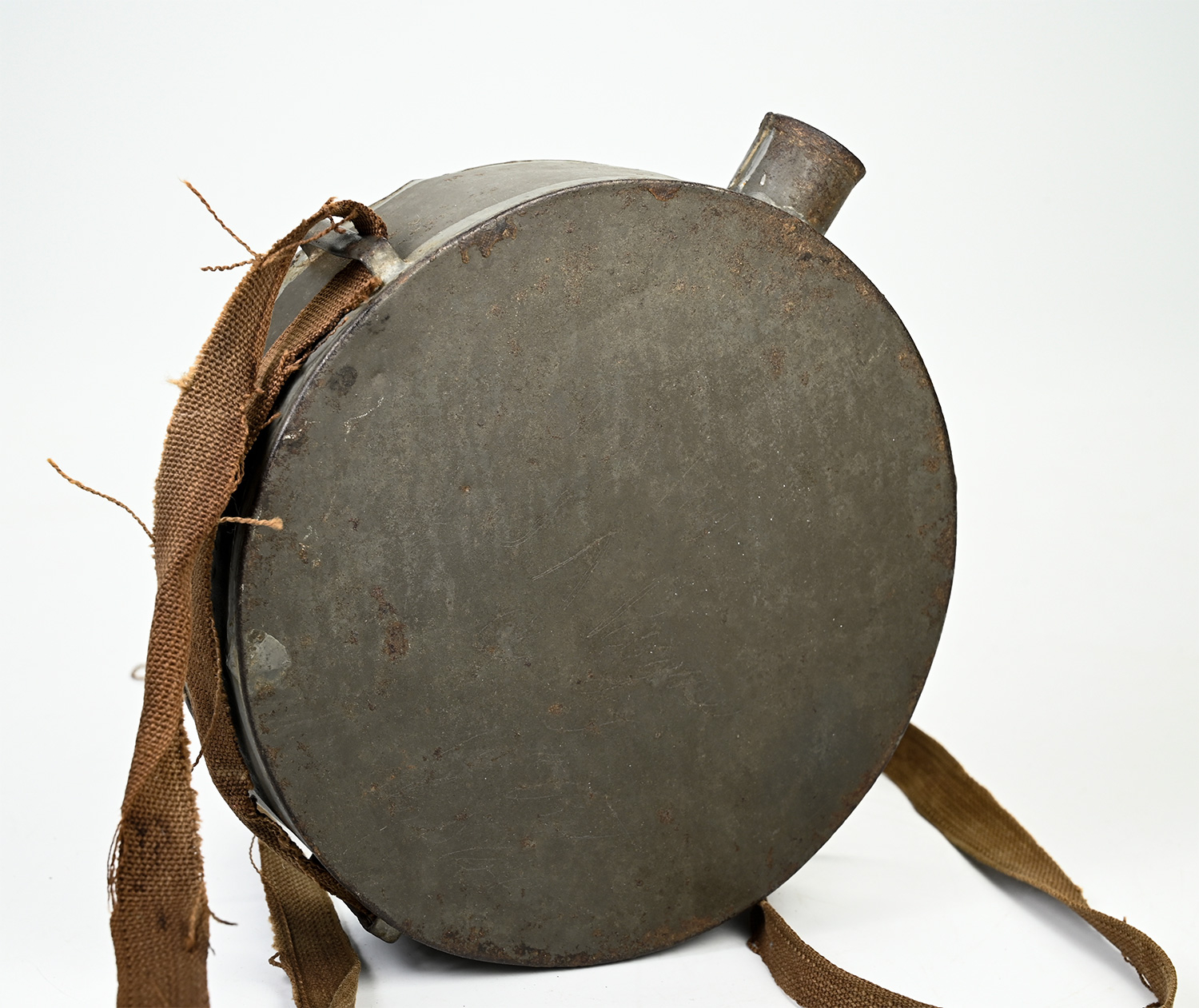
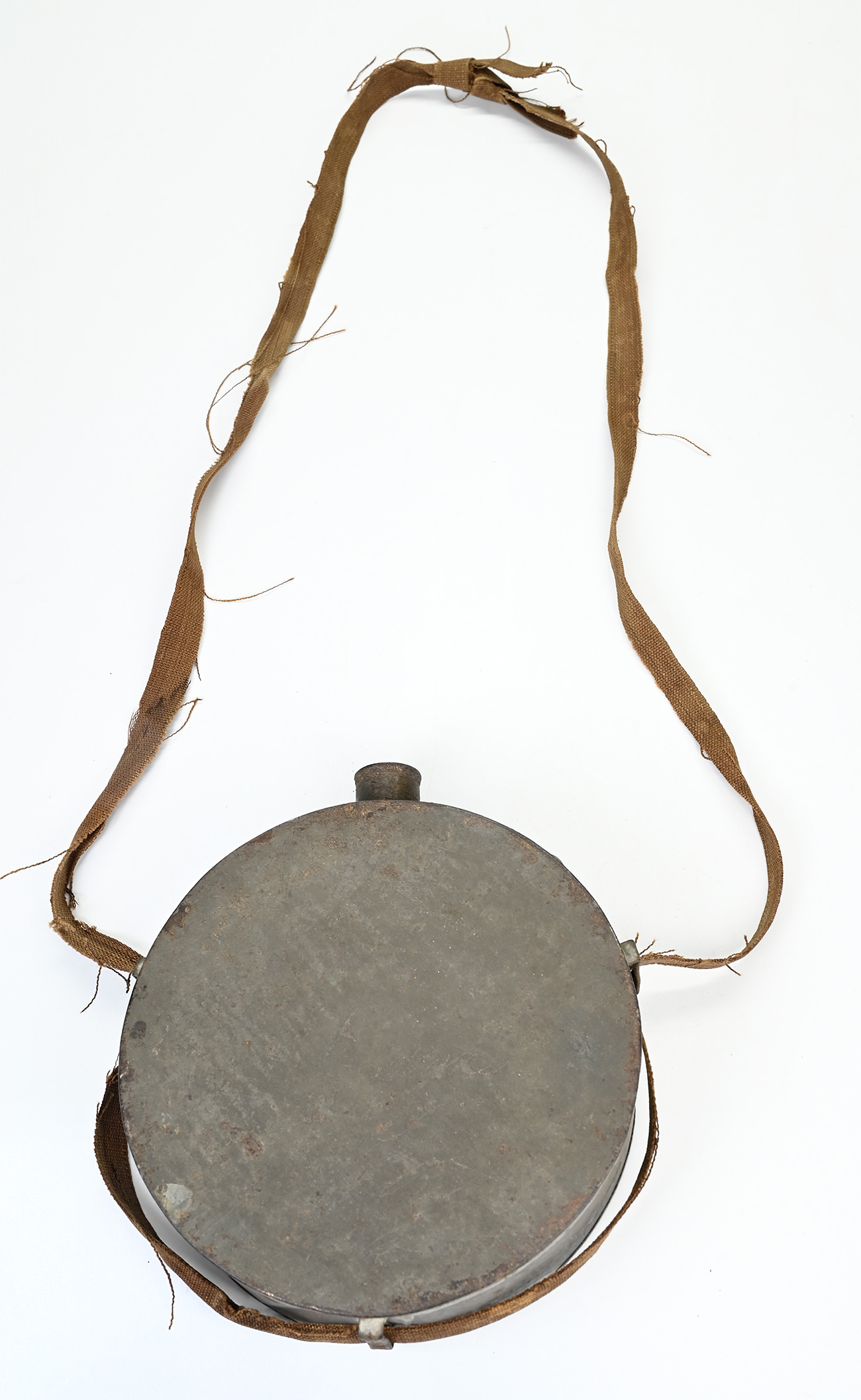
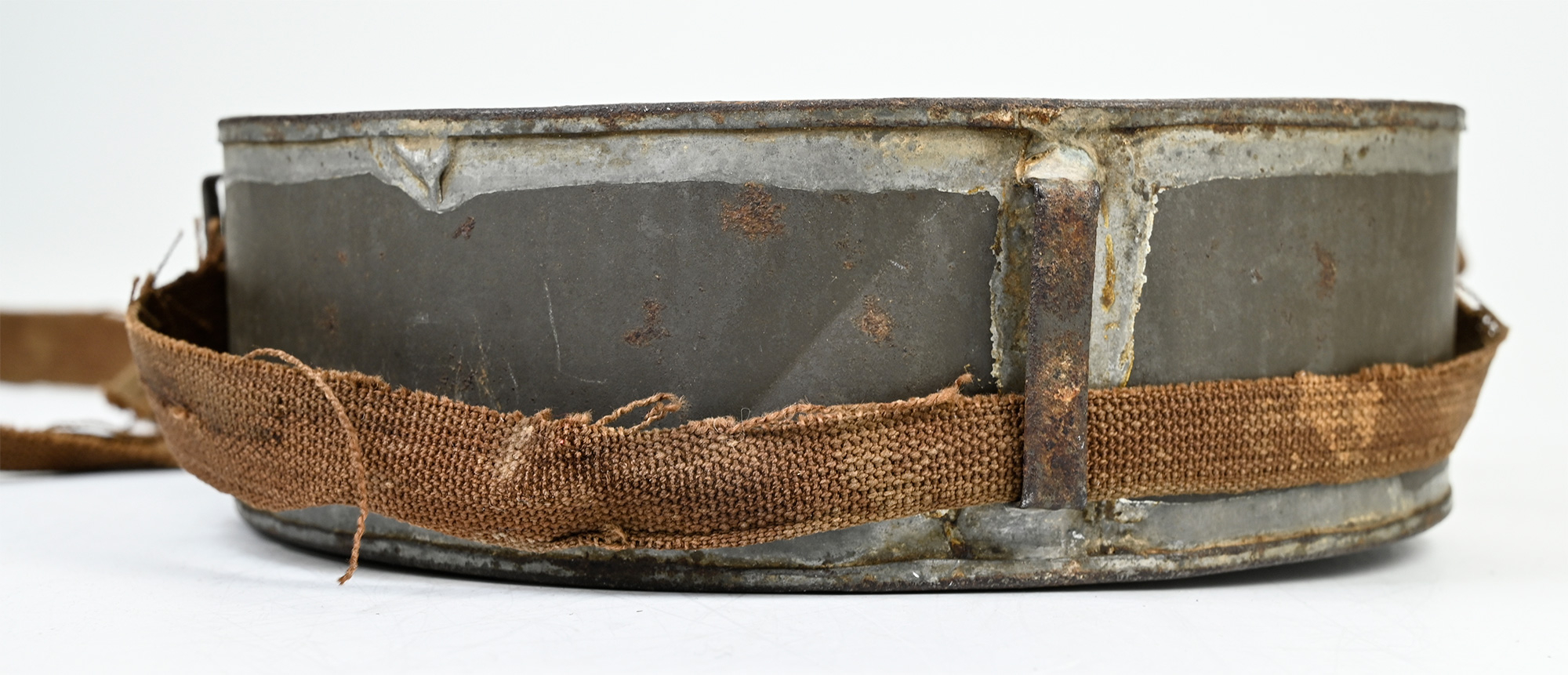
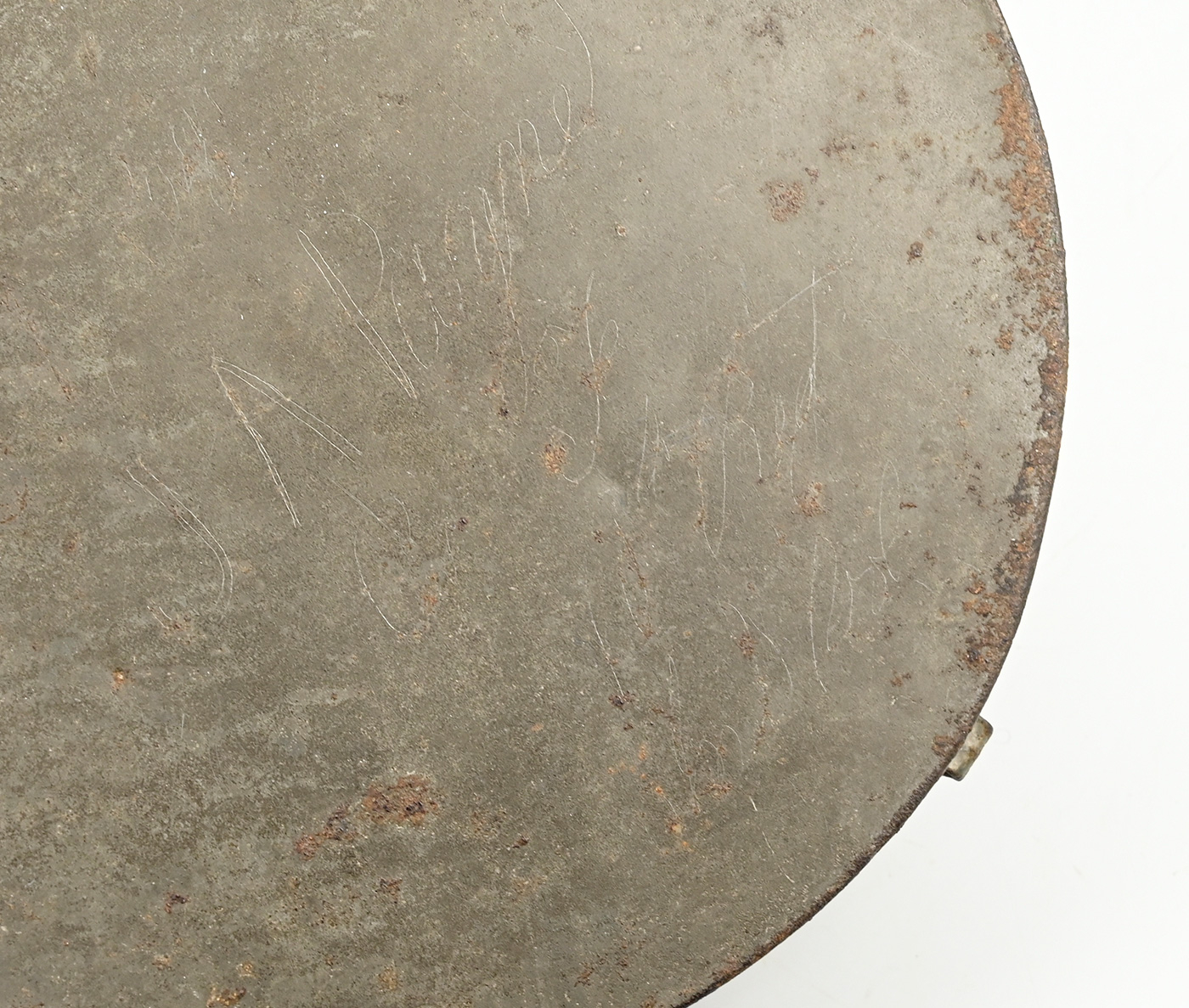
$2,495.00 SOLD
Quantity Available: None
Item Code: 2022-517
This classic tin drum canteen has a dead-real inscription on one face reading: “J A Payne / Co. F / 10th Regt / Ind. Vols.” The lettering is done in a combination of block letters and script. The other face appears to have some or all of the same information scratched in it, but it is only partially visible. The canteen is a classic type used by some prewar militia units and widely produced in the south for issue to Confederate troops. It is made a tinned sheet iron and has flat faces soldered to the rim, which in turn is fitted with three brackets for the shoulder strap and a tinned iron spout. Brackets and spout are firmly in place. The spout has a soldered seam and rolled lip. The loosely woven light-brown web strap is complete and solid, though with fraying to the edges from wear and use. The metal is a uniform gray, with the solder showing somewhat lighter and some scattered areas of crusty thin brown surface rust, but no holes and the brown mostly around the perimeter of the faces, but with two patches on one face, along with a shallow dent.
If a Confederate product it is likely a souvenir kept by Payne from the 1861 Battle of Rich Mountain. Lincoln’s call of April 15, 1861, troops for three-month’s service assigned Indiana a quota of six regiments of infantry or riflemen. Within two weeks the regiments were filled and organized, comprising sixty companies and roughly 4,600 men. The regiments were numbered 6 through 11, recognizing the five regiments the state had organized for the Mexican War. (There was no shortage of volunteers- many of those closed out of the three-month regiments immediately signed up for one year’s state service in other units and soon after for three years’ service as volunteers for U.S. service.) John A. Payne enlisted and mustered as a private in Co. F of the 10th at Indianapolis on 4/25/61. He listed himself as a resident of Clay County and is likely the same John A. Payne, age 22, in the town of Dick Johnson, Clay County, listing himself as merchant in the 1860 census.
The regiment left the state June 19, to take part in the struggle for control of transportation routes through western Virginia, proceeding to Parkersburg and then Buckahannon. As part of Rosecrans’ brigade in the small army led by McClellan their first and only battle was a flank attack against a Confederate post on Rich Mountain on July 11, where they lost some 3 men killed and 7 wounded in a two-hour fight that routed a smaller group of Confederate defenders that left them in possession of the ground and led to the evacuation of other Confederate positions. Subsequent fighting kept the western counties of the state in the Union and, for better or worse, elevate McClellan to higher command. The regiment in the meantime moved to Beverly shortly after the battle, remaining there until July 24, when it returned to Indianapolis for muster out in August.
Payne thus had time and opportunity to acquire a battlefield souvenir, though it may may also be that this canteen is an even scarcer example of an early-war Indiana state contract canteen for its first six regiments. The state was responsible for organizing, arming, uniforming and equipping its new units and there was little available at state arsenals. Advertisements were promptly published, including a May 10, 1861, notice in the Indianapolis Daily Sentinel that 4,600 canteens were needed, samples and proposals were due by May 17. Whoever produced them, and the contract may well have been divided among several makers to speed the process, the maker was most likely using a familiar pattern and not tooling up to produce large quantities of the U.S. regulation oblate-spheroid canteen at that stage. The state of Wisconsin may offer a parallel- they made use of tin drum canteen, albeit with the narrower “eyes” specified for the shoulder strap rather than the wider bracket or “loop.”
Payne was mustered out of the 10th on 8/6/61, but did not remain a civilian long. He signed up in the 2nd Indiana Cavalry, listing his residence then as Bridgerton, and mustered into Co. H as a sergeant on 11/1/61. He was commissioned 1st Lieutenant 12/25/62 and Captain 4/8/63. The unit served in the Army of Ohio and Army of the Cumberland, and their combined army and department, and then in the Military Division of the Mississippi, losing 4 officers and 38 men killed or mortally wounded during their service. Payne was captured in September 1864 at Newnan, Ga., during the Atlanta Campaign (though an OR report indicates he may also have been captured earlier at Varnell Station in May,) and was interned at Macon and at Columbia, but survived to be discharged 3/11/65.
Whether initial state issue or battle trophy, this is a really cool, soldier-identified Civil War canteen that certainly has more room for research. [SR] [ph:m]
~~~~~~~~~~~~~~~~~~~~~~~~~~~~~~~~~~~
THIS ITEM, AS WITH ALL OTHER ITEMS AVAILABLE ON OUR WEB SITE,
MAY BE PURCHASED THROUGH OUR LAYAWAY PROGRAM.
CLICK HERE FOR OUR POLICIES AND TERMS.
THANK YOU!
Inquire About VERY SCARCE EARLY-WAR 1861 INDIANA CONTRACT OR CAPTURED CONFEDERATE TIN DRUM CANTEEN INSCRIBED BY JOHN A. PAYNE, 10th INDIANA
Most Popular
Historical Firearms Stolen From The National Civil War Museum In Harrisburg, Pa »
Theft From Gravesite Of Gen. John Reynolds »
Selection Of Unframed Prints By Don Troiani »
Fine Condition Brass Infantry Bugle Insignia »
featured item
SILVER MOUNTED PRESENTATION WOOD FIFE OF EUGENE JEWELL 18th OHIO: CAPTURED AT STONES RIVER; HE SERVED BESIDE TWO OF HIS SONS, AND UNDER ONE OF THEM!
This is not only a real, identified Civil War fife—in contrast to the vast sea of postwar and even wartime fifes out there with bogus inscriptions and stampings- but also a great piece of Civil War military folk-art: silver-mounted, inscribed and… (1268-166). Learn More »
site search
Upcoming Events
The shop is currently closed so that we may conduct our annual inventory. We are available by phone… Learn More »


